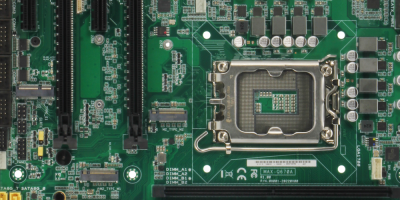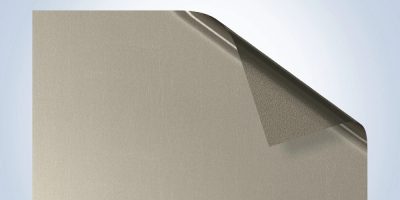The MAX-Q670A sets new benchmarks for expandability, storage capacity, and processing power, said Aaeon. The addition to its Micro-ATX range is the company’s first Micro-ATX industrial motherboard to incorporate the new 13th Generation Intel Core processor platform (formerly Raptor Lake).
It supports a diverse range of CPUs from both the 12th and 13th Generation Intel Core processor ranges, from 35W i3 to 65W i9 devices, with the most advanced of these offering eight P-cores, 16 E-cores and 32 threads. Advanced technologies available on this platform include Intel TCC for real-time computing, Intel vPro Enterprise for robust security and stability and Intel Turbo Boost Max Technology 3.0 for targeted workload management.
Aaeon designed the MAX-Q670A with upgrades in storage, hardware-based security features and increased speed and bandwidth via both onboard interfaces and expansion modules.
It is equipped with two 16-lane PCIe Gen 5 slots to accommodate multiple expansion modules such as graphic cards. There is also a further option of installing two eight-lane cards per slot. There are four LAN ports, two of which support 2.5GbE via Intel I225-LM and high-speed peripheral device interfaces, bolstered by up to 128Gbyte of DDR5 system memory to accelerate data transmission. This is in addition to a dense I/O comprised of a DB-9 port, alongside an internal nine-pin header for RS-232 function and an 8-bit digital I/O interface.
Security features include four rear USB 3.2 Gen 2 ports, which are bootable, and two internal USB 3.2 Gen 1 and USB 2.0 ports which also support a USB switchable power feature for remote peripheral device rebooting.
Eight SATA III drives with RAID 0, 1, 5, 10 support provide storage capacity and there are two M.2 2242/2280 M-Keys which provide four-lane PCIe Gen 4 functionality.
The MAX-Q670A is now in mass production.
Established in 1992, Aaeon designs and manufactures industrial IoT and AI edge products. It provides industrial motherboards and systems, rugged tablets, embedded AI Edge systems, uCPE network appliances and LoRaWAN/WWAN solutions as well as OEM/ODM services worldwide. It also works closely with cities and governments to develop and deploy smart city ecosystems, offering individual platforms and end-to-end solutions.







